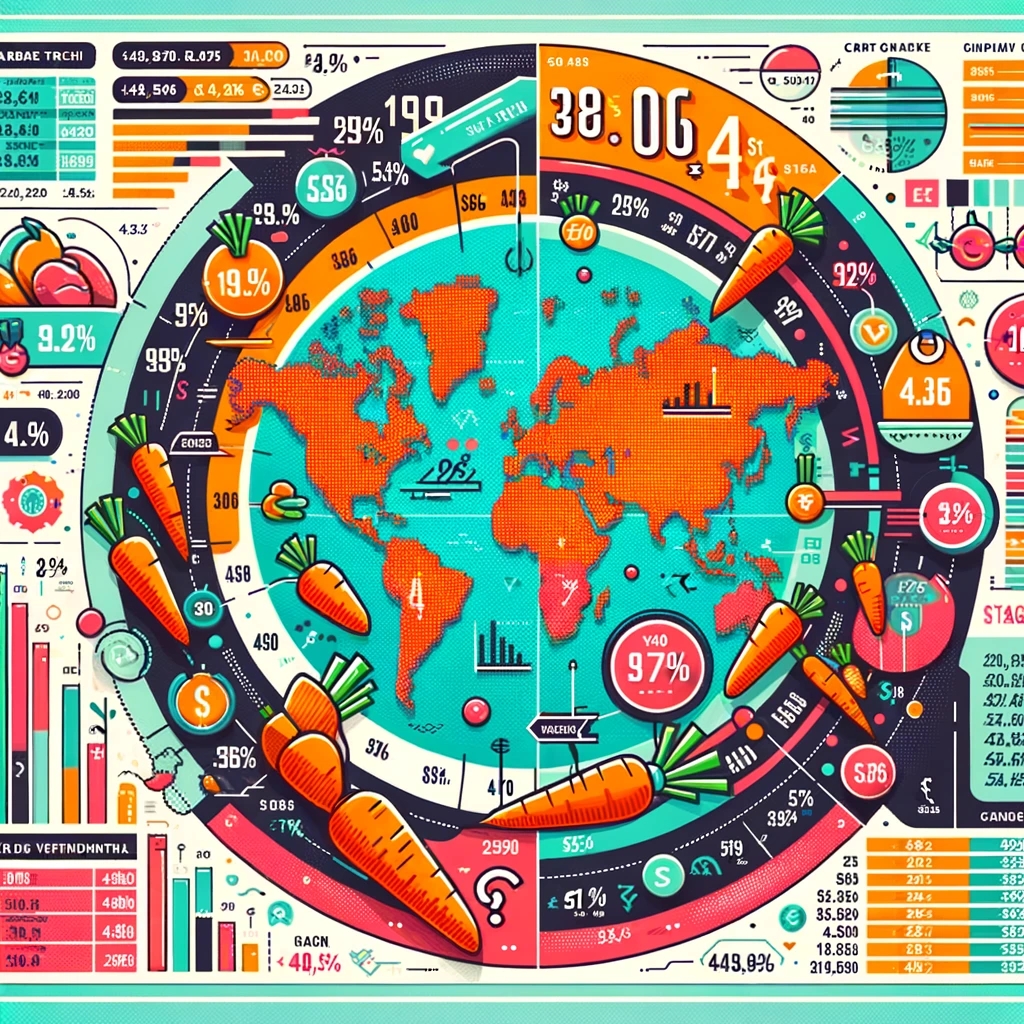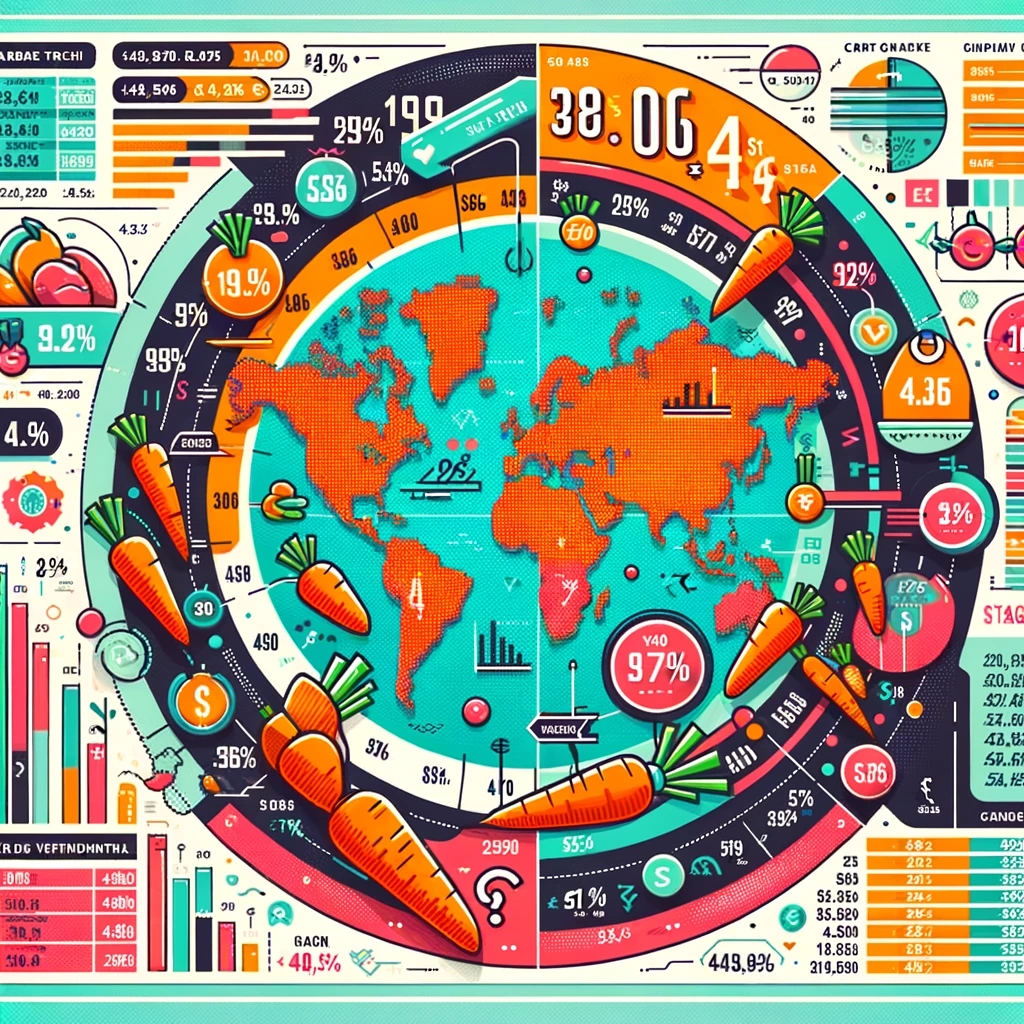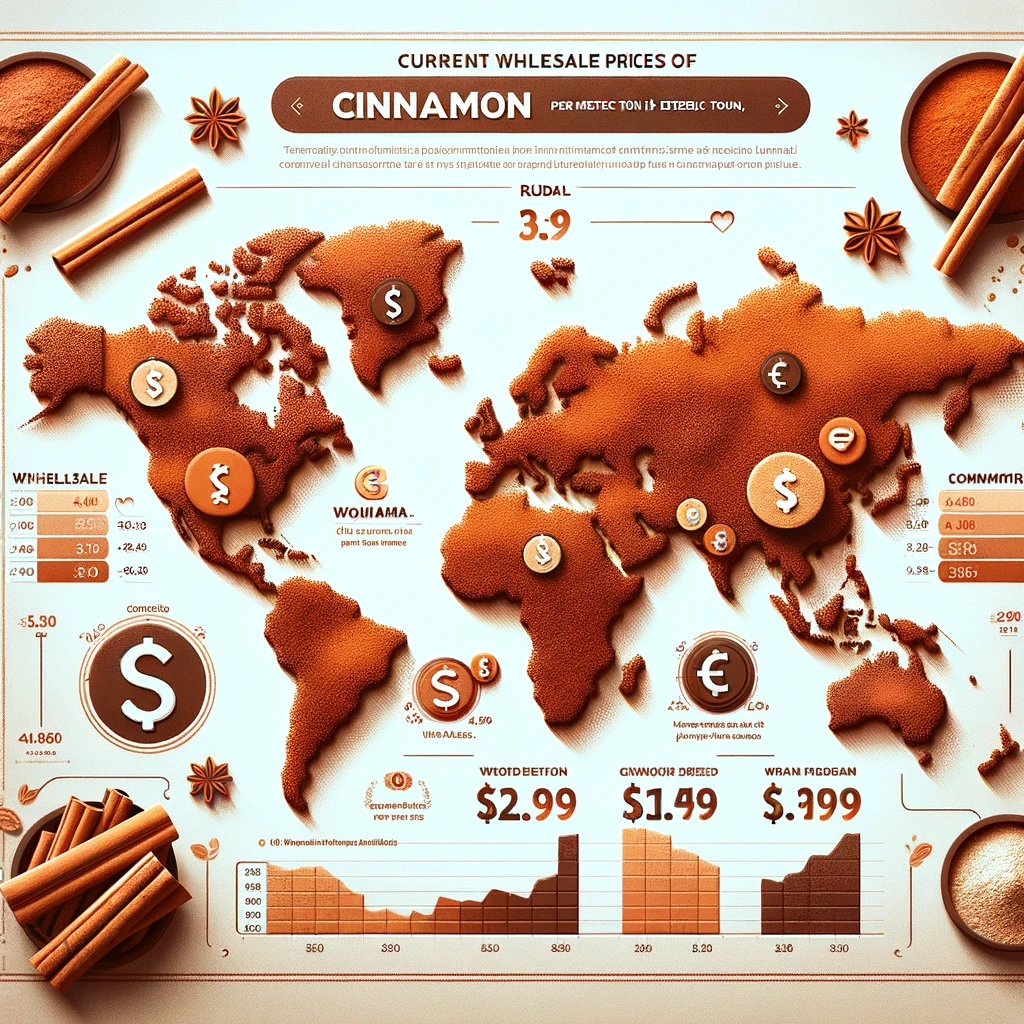In the complex and ever-changing world of agricultural commodities, the carrot market stands as a vibrant and insightful example of global trade dynamics. This report, courtesy of Husfarm.com, offers an in-depth examination of the current state of carrot trading across the globe, shedding light on the latest wholesale market prices and trends as of March 18, 2024.
Carrot Price Variability Across Markets
The global carrot market showcases a wide range of prices, reflecting the diversity of the product, regional demand, and the intricacies of international trade:
- European Market Dynamics: A uniform price of €1.25 per kg for carrots was observed at Ovocníčkovo fruit & vegetable wholesaler and Mercamadrid, indicating stable market conditions within the European Union. Conversely, specialty carrots, such as the 5 kg plastic (BE) from Michal Šimek s.r.o., commanded a higher price of 22.9 CZK per kg.
- Middle Eastern Premiums: The Alforda Central Fruits and Vegetables Market in Kuwait priced Australian carrots and Chinese carrots at a premium, 3 KWD and 1.5 KWD per piece, respectively. This highlights the premium placed on imported, high-quality produce in this region.
- Asian and African Insights: In markets like Faisalabad and Thrissur, bulk purchases (100 kg) of carrots reflected both the local economic conditions and the value assigned to foreign varieties, with prices ranging from 8500 PKR in Pakistan to 60 INR per kg in India for out-of-state carrots.
- Specialty Varieties: Niche markets for unique carrot varieties, such as purple and yellow carrots from the Netherlands, commanded significant attention with prices up to 89.9 CZK per kg, showcasing consumer interest in premium and specialty produce.
Trends and Observations
- Packaging and Presentation Impact: Packaging significantly influences market prices, as seen in Cape Town Market’s differentiated pricing for various packaging options, from 40 ZAR for a 7.5KG bag to 110 ZAR for a thrift pack of 10KG. This demonstrates the value addition through packaging and marketing strategies.
- Currency and Economic Factors: The report indicates a broad spectrum of prices adjusted to local economic conditions and currencies, from the ZWD in Zimbabwe to the KWD in Kuwait, emphasizing the role of currency strength and economic stability in food pricing.
- Consumer Preferences and Quality Perception: The distinction between basic and specialty varieties, such as unwashed carrots in Xihu Township Market versus organic carrots on the field in La ferme Destexhe & Fils S.A.G.R., reflects consumer preferences and the perceived quality of produce.
Strategic Insights for Stakeholders
This analytical snapshot offers valuable insights for various stakeholders in the global carrot market:
- Producers and Exporters: Understanding the premium markets and developing strategies to cater to niche segments can enhance profitability.
- Importers and Retailers: Insight into packaging and marketing trends can inform better inventory and sales strategies.
- Consumers and Policy Makers: Awareness of global price dynamics and trends can aid in making informed decisions regarding consumption patterns and agricultural policies.
Conclusion: Navigating the Global Carrot Market
As the carrot market continues to evolve, stakeholders must stay informed about global trends, regional price fluctuations, and consumer preferences. The insights provided by Husfarm.com highlight the complexity and dynamism of global agricultural trade, offering a foundation for strategic decision-making in the carrot industry.
In conclusion, whether you’re a producer looking to expand your market reach, a retailer aiming to optimize your product offerings, or a policy maker seeking to understand agricultural trade dynamics, this report offers comprehensive insights into the global carrot trading environment.





